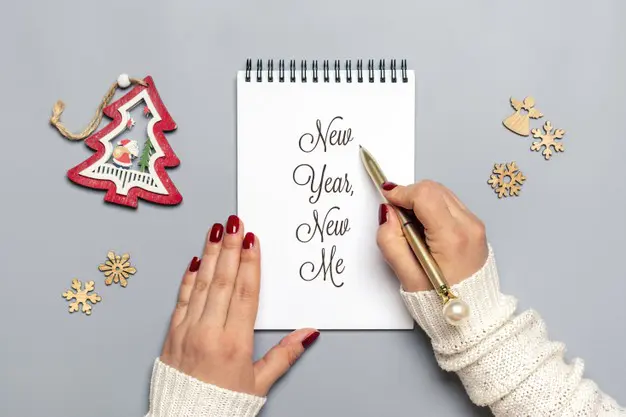
Japanese culture and customs interest you?
Are you thinking of moving to Japan but are unfamiliar with Japanese customs and traditions? Don’t panic! This article is for you! If you familiarize yourself with the typical customs of this country of the rising sun, you are sure not to be caught off guard. It is useful to know these Japanese customs like the back of your hand.
Japan is a destination that attracts people from all over the world . This is also the case for fans of manga, anime, Japanese culture and customs itself.
It is a country full of many customs and traditions that you absolutely must know and respect if you want to fully enjoy your Japanese adventure. Here are different Japanese customs that you know and learn by heart.
Custom N ° 1: Greeting, a Japanese art

The Japanese place great importance on the way they greet each other. In Japan, you will be asked to greet different people in different ways denoted by body position. Note that men have their arms at their sides and tilt only the upper body. As for the women, they have their hands crossed in front of them, at the height of the pelvis, while tilting the upper body as well.
You should know that there are 3 ways to bow:
- First of all, the “eshaku”. It is a posture that requires bending at 15 ° in front of a person of the same social rank.
- Then we have the “kerei”. This is a greeting reserved only for your supervisor or your teacher and requires bowing at 30 °.
- And finally, there is the “saikeirei”. It is a greeting which can only be performed in front of the Emperor. It is also performed if you sincerely apologize for a very serious mistake. You must therefore lean at 45 °.
If you want to visit Japan, I advise you to practice!
Custom N ° 2: Public transport
When traveling on public transport in Japan, you will notice that the Japanese follow very specific rules. When you take the metro, everyone lines up in single file and each takes turns getting on.
During their journey, they don’t usually speak loudly to each other or on the phone, to avoid disturbing their neighbors. They even turn off the ringer of their device to keep trains and subways peaceful.
If you ever have the misfortune of being sick, avoid blowing your nose into a tissue. Among the Japanese, it is only used to wipe the hands after washing them. Finally, unlike in some countries such as France, never position yourself to the right of the escalator but to the left.
This will allow people in a hurry to be able to go up in peace.
Custom N ° 3: In a restaurant

When you go to a restaurant and start to eat, remember to say “itadakimasu” (thank you for this meal). This is one way to express your gratitude for the meal. When you are done you have to pronounce “gochisosama desu” (thank you for this meal). This is also the case, when you want to drink, you have to say “kampai” (empty your glass).
In Japan, you don’t have to leave a tip. If you leave one, chances are the waiter will run after you to return the money you “left” on the table. Note that the Japanese also have a special way of holding their bowl, they prefer to hold it in the palm of their left hand, bringing it closer to their mouth to enjoy using their chopsticks.
You should never, under any circumstances, place your chopsticks in your bowl. It refers to incense sticks for the dead. So, do your best to avoid faux-pas if you don’t want to anger the locals.
Custom N ° 4: Visiting temples

In the daily life of the Japanese, visiting temples is a very common practice. Don’t even think about going there without washing yourself properly.
At the entrance of the temple, you will find a small fountain in which you can purify yourself by taking water with the ladle and washing your right hand first, then your left hand and finally your mouth.
You must take off your shoes, which is common practice in any location. Whether at home, at restaurants, at school, etc. Of course with the presence of a tatami mat (groundsheet).
Custom N° 5: Addressing Japanese People
This is a very well-known custom, especially for people who are fans of anime or manga. In Japan, there is an “honorary” suffix for everyone you know. These are suffixes that locals use in all contexts of daily life.
Here are the most used ones:
- “chan”: suffix used for girls, children, very close friends or a girlfriend. In short, anyone for whom one feels tender affection. Example: “Ohayô Mika-chan! “
- “kun”: suffix used with male friends, children, or a boyfriend. Example: “Konnichiwa Haru-kun”
- “san”: this is the base suffix. It is most often used with those we don’t know well, regardless of gender, age or social position.
- “sama”: this is the most formal suffix. It’s a more respectful version of “san”. Generally used in formal contexts to address people of very high status, such as professionally, with clients or more generally speaking of Japanese deities.
- “sensei”: suffix used for professors, doctors, scientists, politicians … Example: “Ohayô gozaimasu Yoshida-sensei” (Hello, professor Yoshida)
Custom N°6: Sitting Correctly
As a general rule, when sitting on the floor in Japan, it should be done in the “seiza” position. Most Japanese are able to hold this position for hours.
If you’re not a regular, it can become quite a hassle after a few minutes. Of course, if you can’t do the “seiza” position, no one will blame you.
Custom N ° 7: In the elevator
There are also rules of politeness that must be observed even in the elevator. If you are the first to enter an elevator, you automatically become its “captain”. It’s your responsibility to stay close to the buttons and hold the door for everyone. It’s the same in corporate executives, the higher ranks are the first to enter while the lower ranks have to keep the door.
Custom N ° 8: Japanese baths
Japanese baths are hot springs that can be either outside or inside. To access it, there are a few rules to follow.
First, you have to go to the locker room. They are most often indicated by colors: red for women and blue for men. Once in the locker room, undress completely and put your things in lockers. You can bring a small towel (provided or not, depending on the location) with you, but you must leave the large one to dry yourself off.
Before you “bathe”, be sure to wash your body thoroughly. Showers are available near the baths with a basin and a seat. If you have long hair, tie it up so it doesn’t soak in the tub.
For people who have a tattoo, some establishments require their customers to put a patch on their tattoo because it is a symbol associated with yakuza.
Custom N° 9: Use both hands
When giving a gift to someone you should do it with both hands. By doing this, you show that you have respect for that person. The same goes for business cards. When giving your business card with both hands, it should be in the direction of the other person.
If you rank lower than your interlocutor, hold out your card lower than theirs and bow. Once you are handed the card, admire it for a few seconds and store it in a card holder. If you don’t have one, it’s a shame. There are strict rules of politeness in the exchange of cards, so be sure to follow them to the letter.
So, did these different Japanese customs surprise you? If so, and you still want to visit, don’t wait any longer and go for it!
In the meantime, do not hesitate to consult the article on useful phrases to understand japanese manners and daily life.

